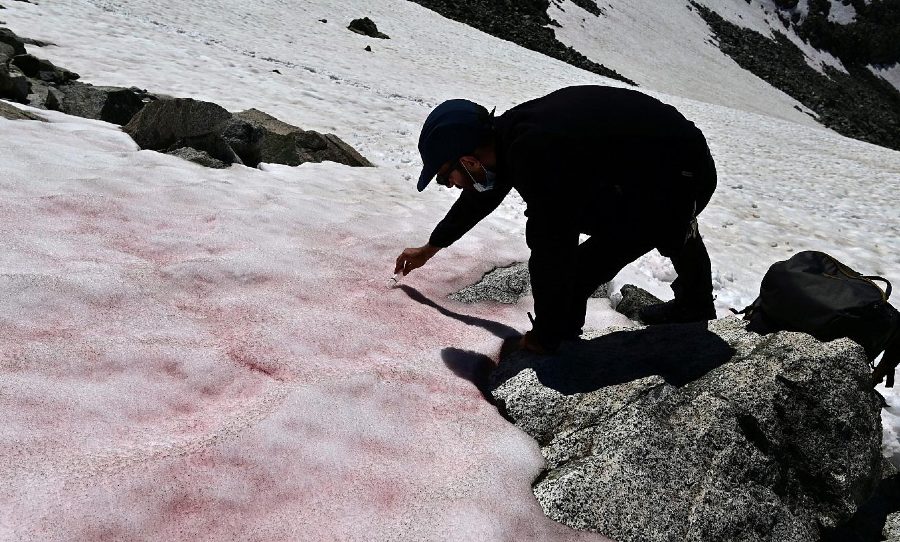Don’t let the attractiveness of this pink snow deceive you, this beautiful phenomenon is a troubling sign for the future of the Italian Alps.
A researcher at the Institute of Polar Sciences, Biagio Di Mauro, has warned that this pink snow, commonly known as watermelon snow, could be having an impact on snowmelt.
Pink snow in Italian Alps could be an environmental disaster in disguise contributing to climate change.
Pink snow is commonly found in spring and summer when the ice melting season begins and snow thaws to reveal the salmon-hue underneath.
In fact, the pink-colour is thanks to algae that carry the carotenoid pigment, and there is concern that this algae is accelerating the effects of the climate crisis as it darkens the snow.
Usually, a sight to see for tourists and locals alike, there is now cause for concern as this pink-coloured snow isn’t as adept at reflecting the sun’s rays as white snow and struggles to keep things at cool temperatures.
Speaking to Agence France-Presse (AFP), Di Mauro said, “Everything that darkens the snow causes it to melt because it accelerates the absorption of radiation. We are trying to quantify the effect of other phenomena besides the human one on the overheating of the Earth.”
Of course, this isn’t good news for the habitat in these polar regions with research published last year predicting that half of the Alps’ glaciers could disappear this century.
Di Mauro told Earther, “Less solid precipitation during winter and higher air temperatures during spring and summer are expected to favour the formation of snow – and glacier-algae.”
The Italian Alps aren’t the only area to have seen pink snow, with blooms popping up in Alaska, the Galindez Island off northern Antarctica, and even in New Zealand.
Unlike the Alps, however, New Zealand’s glaciers turned pink due to the ash from the bushfires in Australia, which much like algae, absorbed the heat, resulting in the melting of snow and ice.




